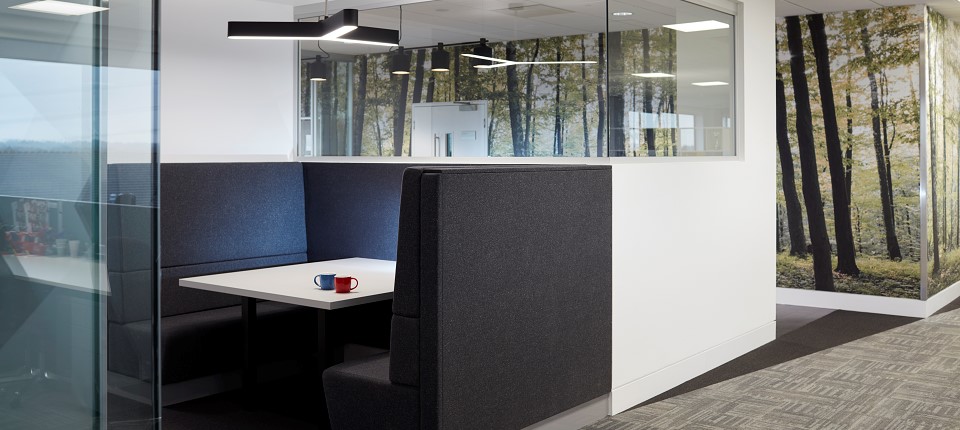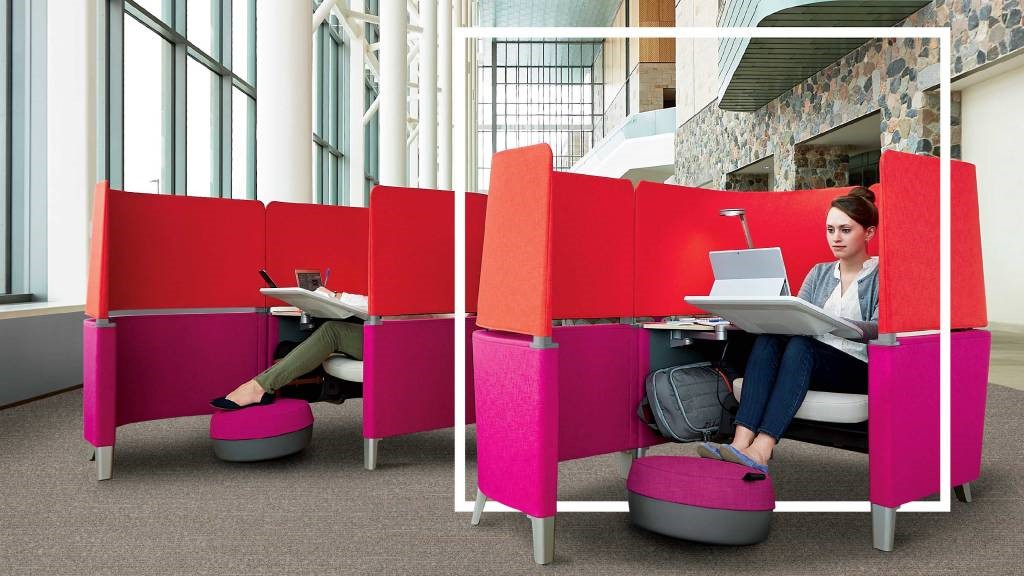Guest post by Helen Bartlett, Paramount Interiors
We’ve already looked at the fact that noise in an open-plan office can be a problem and how workspace design can help to reduce noise levels. However, some interesting research by global office furniture manufacturers, Steelcase, not only looked at the negative aspects of distraction, but also the advantages of encouraging collaboration and providing stimuli in your workspace and for your workforce.
UK-based office design company Paramount Interiors, works closely with Steelcase on their office fit out projects. We asked Paramount Interiors’ Design Director, Helen Bartlett, to give us her thoughts on how a workspace can be designed to avoid distraction while at the same time inspire the individuals that work in it.
We all have to cope with interruptions at some point in our working day, it’s inevitable. Which is why some workers have nailed down how to ‘zone these distractions out’ and stay focused. On the other hand, given that distractions are part of everyone’s work, some professionals even claim that they need a background buzz to help them concentrate–which is why many modern workers are happy headphone-wearers that manage to be productive.
However, the recent trend towards spacious, collaborative, open plan workspaces has resulted in many forgetting that at some point during the workday, we all need to get away from the noise, the buzz, and (even) the people.
To be human is to be distracted
The Steelcase research recognised that everyone is easily distracted; it’s part of the creative process and distractions are often encouraged. One of the reasons why collaborative workspaces became such a hit is because we all recognized that collaboration and interaction in the workplace can have desirable effects. However, we might’ve let it gone too far, to the point where this interaction prevented workers from concentrating and carrying out tasks at hand.
Steelcase’s neuroscientific research even found that it this tendency towards distractions is rooted into our evolution; i.e. we tend to look up when someone walks by in our peripheral vision because of an innate fear of potential predators.
While we’re unlikely to be bothered by sabre-tooth tigers by the water cooler, this insight helped them identify three different brain modes that individuals use in the workplace:
- Focus – concentrating on a task
- Regeneration – resting the mind or seeking interaction with colleagues
- Activation – physical activity that stimulates the brain
Since our brains have different needs during the course of the day, it makes sense that we should create different spaces specific to the way that we need to work in them. An open plan office isn’t always the answer, which is where concepts like agile workspaces come in.

In search of solitude
Steelcase and other furniture manufacturers have responded to this problem by creating products that give employees “microenvironments” where they can get away from the constant buzz of workspaces.
Pod-like workspaces, like Steelcase’s Brody, contain their own power source, lighting, storage and in some cases integrated display screens. Enclosed meeting booths, like the ones installed for the fit out of KPMG’s offices in the UK, give people spaces where they can concentrate in peace. As for the classic room with a closed door…there will always be a place for it in any workspace; either for personal use or for private meetings.
Preoccupied prodigies
There is no bullet-proof solution to prevent distraction in the workplace, but this is also a good thing; who wants to work in a space that’s fully quiet and non-stimulating anyway? But, providing options that allow people some quiet and private time is a good way to maintain a balance.
In any case, if your members are constantly distracted, it might mean that they’re intellectually superior to other individuals.
Feature image courtesy of Steelcase


 Dr. Gleb Tsipursky – The Office Whisperer
Dr. Gleb Tsipursky – The Office Whisperer Nirit Cohen – WorkFutures
Nirit Cohen – WorkFutures Angela Howard – Culture Expert
Angela Howard – Culture Expert Drew Jones – Design & Innovation
Drew Jones – Design & Innovation Jonathan Price – CRE & Flex Expert
Jonathan Price – CRE & Flex Expert











